 This year’s budget has primarily focused on three key sectors namely agriculture, healthcare and infrastructure. The proposed plan of the government to provide 10 crore poor and under-privileged people with medical treatment coverage of up to Rs 5 lakh is indeed a laudable step.
This year’s budget has primarily focused on three key sectors namely agriculture, healthcare and infrastructure. The proposed plan of the government to provide 10 crore poor and under-privileged people with medical treatment coverage of up to Rs 5 lakh is indeed a laudable step.
The general election is just a year away and there are telltale signs of rural distress from certain pockets and it is logical that the budget would try and address the concerns of the rural sector. A wide array of steps has been announced ranging from enhanced MSP for kharif crops, upgradation of rural haats to enable small and marginal farmers to sell directly to bulk purchasers and consumers, expansion of rural infrastructure, enhanced outlay for irrigation and adoption of the cluster model for horticulture. All these augur well for the rural sector. In addition, allocation of funds for fishery, aquaculture, animal husbandry, dairy farming, agro-logistics services, extension of crop loans to lessee cultivators and schemes like National Bamboo Mission can fuel entrepreneurship at the rural level. I welcome the setting up of an agri-market infrastructure fund with a corpus of `2,000 crore. The decision to set up 42 mega food parks can provide fillip to the agro-processing industries. However there is not much clarity on how the government intends to build those – on its own or in collaboration with private sector.
In infrastructure the two areas of focus have been roads and railways. The envisaged investment of `5.35 lakh crore (for Phase I of Bharatmala programme) for roads and capex of `1.46 lakh crore for railways will assist in providing the momentum to the economy. It will also result in growth for construction equipment manufacturing companies, construction companies and contractors and infrastructure financing institutions involved in supporting these sectors. Overall, it will have a tremendous boost on employment generation as construction happens to be the second largest employment generator after agriculture.
Another laudable step taken by the government is to develop the corporate bond market and the amendments proposed in the stamp duty structure. It is quite important to develop the capital market which has been our request for the last few years in order to bring more depth into the debt capital market. There are certain steps to be taken so that the conceptual thinking of the government can be converted into implementable actions. One of the most important areas to be addressed is to enable, facilitate and encourage pension funds, provident funds and insurance companies to invest in bonds issued by infrastructure companies even if those bonds are investment grade and not fall in the category preferred by these fund repositories. The introduction of the tax on long-term capital gains could have been delayed by another few years, especially keeping in mind that the equity capital market is the only option for many companies for mobilising resources as the banks are presently shy to lend to manufacturing and infrastructure companies. This would surely dampen the buoyant investment spirit which has been prevailing.
-Hemant Kanoria
Chairman and Managing Director, SREI
The Budget is on expected lines and provides support to sections of society, where it was needed the most. The FM and Prime Minister Narendra Modi know how to put the money where the mouth is. The agri and rural landscape were in some kind of distress and provision of over `14.34 lakh crore to be spent on rural infrastructure should also add to the employment generation, especially in the farm sector. This money would come from non-budgetary sources. Relief to the salaried employees by way of `40,000 per annum would leave more disposable income in the hands of the middle class and boost consumer demand. 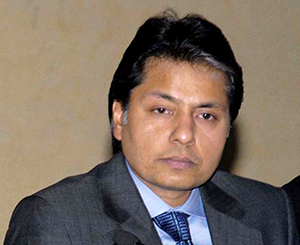 The launch of 585 e-mandis and linking them with 22,000 APMC mandis, without applying restrictive clause would help farmers and also those companies engaged in agri –processing, FMCG including organized big retail chains. One of the major problems associated with the Minimum Support Price (MSP) was its implementation. Now, the Finance Minister has committed that the NITI Aayog would coordinate with the state governments to ensure that the farmers get price of their produce which is one and half times of the cost. The Finance Minister has marginally exceeded fiscal deficit targets, but if expenditure involves a quality spending, the outcome would only help economic growth.
The launch of 585 e-mandis and linking them with 22,000 APMC mandis, without applying restrictive clause would help farmers and also those companies engaged in agri –processing, FMCG including organized big retail chains. One of the major problems associated with the Minimum Support Price (MSP) was its implementation. Now, the Finance Minister has committed that the NITI Aayog would coordinate with the state governments to ensure that the farmers get price of their produce which is one and half times of the cost. The Finance Minister has marginally exceeded fiscal deficit targets, but if expenditure involves a quality spending, the outcome would only help economic growth.
-Sandeep Jajodia
President ASSOCHAM
The Budget primarily focuses on the development of the rural sector and agriculture, health, education and MSME sectors, especially when the government is faced with the uphill task of overcoming a subdued economy and a challenging fiscal and farm situation. The Finance Minister’s effort to double farmers’ income and provide benefit to senior citizens through protection of health is unique. An attempt has been made to shift agriculture from a production centric sector to an enterprise. The world’s largest health scheme for the underprivileged, enabling more companies to enjoy the benefit of lower corporate tax, utilisation of increased infrastructure funds for agriculture, roads development and logistics growth and bringing in relief for women and senior citizens are some of the wide-ranging positive announcements. 
However, the impact of tax on long term capital gains on the corporate and industry sectors needs to be studied. In agriculture, fixing MSP at 1.5 times the production cost may bring in inflationary pressures.The Bengal Chamber appreciates the efforts for making the endeavour to bring in structural changes in critical social sectors of the economy while not wholly overlooking the needs of the industry and corporate sectors and expectations of individual citizens.
-Media Release
Bengal Chamber ofCommerce
and Industry
A budget is not a collection of figures. It is an expression of the aspiration and the vision of a government. In order to maintain the socio-economic balance of a country, it is very important to bring up the quality of life and the income of the lower and middle classes. The budget is in the right direction to bridge this gap. 
The four pillars of a nation’s development - infrastructure, education, healthcare and rural economy are the major beneficiaries from this budget, signalling more job creation and spending power in the hands of the largest population which will automatically help the fifth pillar - industry by generating strong demand across business segments which is expected to boost the economy.
-Aditya Agarwal
Director, Emami Group
The impetus to the rural economy and the overall agriculture sector in the Union Budget presented by Arun Jaitley would be a force multiplier for overall growth in the coming years. The Budget is very much in line with the expectations of FICCI. It will drive consumption in a big way, thus helping growth in other related sectors. Additionally, the attention to the MSMEs through better access to finance or lowering of the corporate tax rate would also help spur both employment and growth in this vital segment of the economy. The stress on jobs in the Budget will help generate meaningful employment.
Another path-breaking announcement in the budget relates to the new National Health Protection Scheme under which an annual health insurance cover of `5 lakh which will be provided to nearly one third of the households. This is the world’s largest government funded healthcare programme and would lead to a clear increase in demand for quality healthcare facilities and services and to match this rise in demand, several measures have also been announced to improve supply of quality health services in the country. While we see a clear focus on the infrastructure sector development in the rural areas, the plans for such development in the urban areas including wider connectivity across the length and breadth of the country have also got the needed attention in the budget.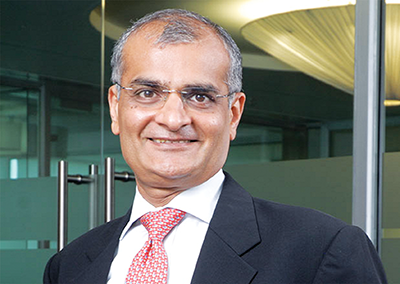
However, given the performance on the disinvestment front this year, there were hopes that the government would be more ambitious in terms of setting the target for the next year. The `80,000 crore target for disinvestment receipts in FY19 is a bit conservative.
The continuation of STT even while re-introducing LTCG will put some additional burden on the market participants. This, however, should not impact markets in the long-term. With the markets giving a compounded return of 15-16% over the last 20 years, a tax impacting 1.5% return should not affect the domestic investor appetite for equity investment.Finally, while consolidation process for the public-sector insurance companies has been indicated, FICCI hopes that a similar plan for the banking sector as was widely anticipated ahead of the budget will also be announced soon.
-Rashesh Sha
President FICCI
The Union Budget 2018-19 is as usual a document of commitment to serve the interests of the big corporates, both Indian and foreign, at the cost of the working class and other sections of the common and marginal people. While the tax exemption limit for the salaried and other sections of the working people remains unchanged, corporate tax for the rich 1% of the population who have cornered 78% of national wealth generated last year has been slashed down by 5% (from 30% to 25%). As a result, the share of direct taxes in the Gross Revenue Income (GRI) has come down to 50.6%, from 51.6% last year, giving a further boost to income and wealth inequality in the year ahead. Government expenditure on social welfare measures for the poor and common people has been slashed down from 13.2% (last year) to 13% (this year) of GDP. On account of agriculture and rural development it has been slashed down from 1.15% to 1.08% for health care it has fallen from 0.32% to 0.29% and expenditure on education has dipped from 0.49% to 0.45% of the GDP.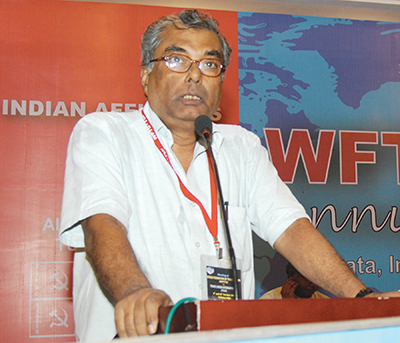
Our organisation is also concerned that the Finance Minister has preferred conspicuous silence on the recovery of NPA from wilful corporate defaulters while being most eloquent on disinvestment of PSUs. Bank Employees Federation of India (BEFI) feels that there is no direction in the Budget towards arresting any of the two most glaring problems which are the problem of rising prices and of growing unemployment.
-Pradip Biswas
General Secretary, Bank Employees
Federation of India
It is a forward looking budget. Emphasis in agriculture, rural sector and small and medium industry will boost the economy. Increase in income in rural sector will increase the consumption expenditure in the rural sector. This will help the economy to a large extent. The Budget has announced a big health protection scheme where 10 crore poor families will get health protection of 5 lakh rupees per year. That has been a great job. Moreover tax cut in MSME would help developing industrial sector of the country and increase employment opportunity.
-S Goenka
President, Indian Chamber of
Commerce, Kolkata
The central Budget 2018-19 is on expected lines and with the elections round the corner, the Budget has tried to address various development oriented issues concerning agriculture and farmers’ welfare, infrastructure and employment generation. In managing these objectives, huge provisions have been made in health, housing, education sectors. The Budget is, in essence oriented in alleviating the poor and middle class. However, there are apprehensions on issues of mobilization of resources hugely provided for these sectors. Besides, it may be difficult to keep the fiscal deficit under control and may cause inflationary tendencies.
Increased emphasis on restructuring of the health sector with larger allocations on ‘Ayushman’ and innovative schemes like covering 50% of the people of India under Health Insurance Scheme up-to `5 lakh per family have made the Budget special.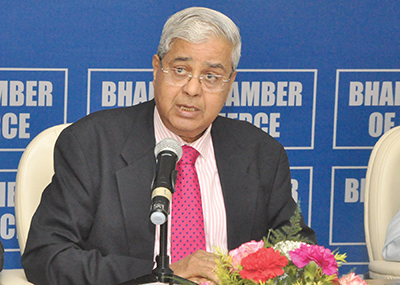
The Finance Minister deserves deep appreciation for laying greater emphasis on the education sector and introducing a new scheme for training the teachers, which was, in particular, overlooked over last several years. Emphasis on greater digitalisation at school level is also laudable.
As regards to the corporate sector, the Budget seems not to have provided any encouragment. There is no incentive for capital generation whereas the huge private investments will be called for to achieve the desired success of the welfare schemes.
There is some relief to the salaried persons and senior citizens. As regards to real estate, there is no clarity on the circle rates. However, it is a welcome step. Further, no major concessions have been announced for the MSME sector, which is the biggest employment provider.
Rapid economic growth can be only on the strength of two sustainable engines – private investments and exports. The Budget has been almost silent on both these sectors.
-Sitaram Sharma,
President, Bharat Chamber of Commerce, Kolkata
It is a good budget. The focus on the agrarian sector and MSME sectors very welcome. They were experiencing stress and the focus on those sectors will help boost their revival. In turn, it will increase consumptive expenditure giving rise to general economic growth. Also, the focus on tourism and affordable housing are extremely laudable. Both these sectors have the potential for maximum job creation.
-Harshavardhan Neotia,
Chairman, Ambuja Neotia Group
The Finance Minister should be appreciated for launching Operation Green to check inflationary tendencies in food grains, allocating `10,000 crore for development of fishery and animal husbandry. The new health scheme is also a welcome step.
However excessive pricing of petroleum products and over emphasis on digital India is a cause of concern as it affects small treders. Reducing the limit of cash payment from `20,000 to `10,000 is also a problemetic area. There is no new allotment for completing existing metro and other projects in West Bengal.
The budget is also silent on the new incentive scheme for MSME sector which has been widely affected after demonetisation and GST.
-Bani Roy Chowdhury
President, Bengal National Chamber of
Commerce & Industry
Disappointing budget from the perspective of private sector involvement in creating mass housing stock that will make home ownership a reality for all Indians. Budget has unfortunately ignored the stressed and vilified real estate sector that is in desperate need of government support through specific targeted tax breaks that help make building affordable homes in India viable.
-Sarjan Shah,
MD, Group Satellite
|
The Budget this year is a boost to ‘Make in India’ initiatives and aimed at a progressive development of the rural economy and growth of the entire country. The focus on infrastructure, social inclusion and progress, education, agriculture and healthcare are steps in the right direction. Though there is not much in terms of addressing the problems faced by the realty sector but the move towards no adjustment in case of the circle rate not exceeding 5 % of sale consideration is a welcome move. Standard deduction for transport, medical reimbursement for salaried taxpayers and incentives for |
senior citizens will help increase disposable income at hand.
-Abhishek Bansal,
Executive Director, Pacific India Group
|
The Budget has several incentives for the rural sector, women etc but I would have liked the benefits of tax reduction to be wide spread with more income tax rebates for middle and salaried classes in order to increase disposable income and boost spending power that will help the economy and our sector to grow in the long run. Though there are no major incentives for the growth of real estate industry the re-introduction of LTCG will help in growth of other investment avenues. Concessions in the budget towards the affordable housing sector and the setting up of an Affordable Housing Fund under the Pradhan Mantri Aawas Yojna, will help the realty sector ancillaries to grow. Though most of the recommendations that we had made on behalf of the real estate industry have not been addressed, the move towards no adjustment to be made in a case where the circle rate value does not exceed 5% of the consideration is a welcome move. |
-Prashant Solomon,
Managing Director, Chintels India
|
The overall measures have a strong impetus towards social inclusion and ec nomic growth. The budgetary allocation of `1 lakh crore towards higher education and research is a welcome move. In terms of development of cities, the budget gives an added fillip to the smart cities mission and urbanisation along with the proposal to develop ten prominent tourist destinations as iconic tourism destinations. |
This is where the proposal to open 18 new schools of planning and architecture in order to to generate skilled designers and architects will create the necessary impetus and awareness towards the importance of design in every aspect of education be it urban planning, architecture, management or engineering. The need for sustainable environment friendly urbanisation and preservation of the fabric of an old city syncing it with modern growth can be addressed aggressively with the right education and awareness. The smart cities programme is progressing well and with continued budgetary support, these cities will greatly benefit from a new ecosystem of infrastructure leveraged with modern digital solutions and new age technologies like artificial intelligence, digital manufacturing, big data intelligence, quantum communications and art of the things.
Prof. (Dr.) Sanjay Gupta,
Director General, World University of
Design (WUD)
This Budget balances populism with pragmatism and, on a holistic basis, is good from a financial planning perspective for long-term investing. There are slight benefits for salaried class taxpayers by way of standard deduction in lieu of transport and medical reimbursements. There are also incentives for senior citizens in exemption of interest income and exemption under Section 80D towards health insurance. The reintroduction of 10% long term capital gains on stocks exceeding `1 lakh gains might initially dampen spirits, however the provision of grandfathering of gains as of January 31, 2018 for equity purchases up to six months prior will soothe this impact. The period of grandfathering may be extended until March 31, 2018 to enable effective cash management and tax planning.
-Ranjeet S Mudholkar
Vice Chairman and CEO, Financial Planning
Standards Board India (FPSB)
Union Budget 2018 perfectly blends reforms and populism with a keen eye on fiscal discipline. FM Arun Jaitley makes a strong push for digitisation, infrastructure development and better quality of education. The move to integrate technology into education is a step in the right direction. The government’s initiative to provide 5 lakh WiFi hotspots in rural areas will allow more grassroot level internet-run businesses to come up. Measures announced for small and medium enterprises will help budding enterprises and help them contribute to the growth in consumer-oriented sectors. Also, the initiative to increase loans to women self-help groups by 37% is welcome. However, there is a lot more that remains to be done to improve the state of women entrepreneurship in the country. 
-Ruby Sinha
Founder, sheatwork.com-
a one stop knowledge hub for women entrepreneurs
Ramesh Agarwal, President MCCI welcomed the Union Budget Proposals 2018-19 presented by the Union Finance Minister who has given a balanced approach towards the growth of agricultural sectors and the MSMEs which are employment intensive sectors. Provisions for institutional Farm Credit has been raised to 11 lakh crore in 2018-19 from 8.5 lakh crore in 2014-15. However it has to be seen that farm loan waiver schemes should not distract the credit delivery mechanism in future.
Extension of the reduced rate of 25% corporate tax currently available for companies with turnover of less than 50 crore (in Financial Year 2015-16), to companies reporting turnover up to `250 crore in Financial Year 2016-17 is a welcome relief as this would benefit the entire class of micro, small and medium enterprises, which account for almost 99% of companies filing tax returns. The step would also boost employment and overall economic growth.
It has to seen how the proposal of taxing Long Term Capital Gains exceeding `1 lakh at the rate of 10% without allowing any indexation benefit and introduction of a tax on distributed income by equity oriented mutual funds at the rate of 10%, influence the capital market. Proposed increase of cess on personal income and corporation tax to 4% from the present 3% is an extra burden on all concerned.
MCCI President appreciated the allocation of `7,148 crore to boost apparel and made-up exports, 12% EPF for first 3 yrs, and extension of fixed term employment for all segments.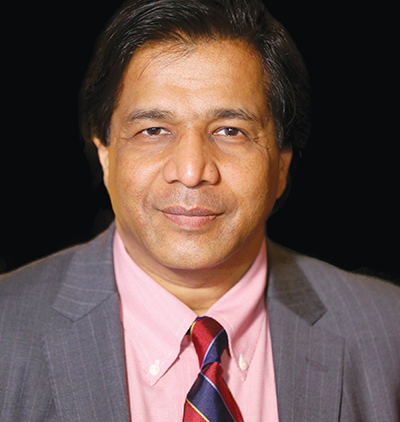
Although there is no change in the income tax slabs, Arvind Agarwal, Chairman, Standuing Committee on Direct Taxes, MCCI, welcomed the reliefs given by way of standard deduction `40,000 in place of the present exemption allowed for transport allowance and reimbursement of miscellaneous medical expenses. Relief provided to senior citizens in term of exemption of interest income from `10,000 to `50,000 on deposits with banks and post offices, no TDS , under section 194A,hike in deduction limit for health insurance premium and/ or medical expenditure from `30,000 to `50,000 under section 80D are appreciated.
-Media Release
Merchants’ Chamber ofCommerce
and Industry
Add new comment